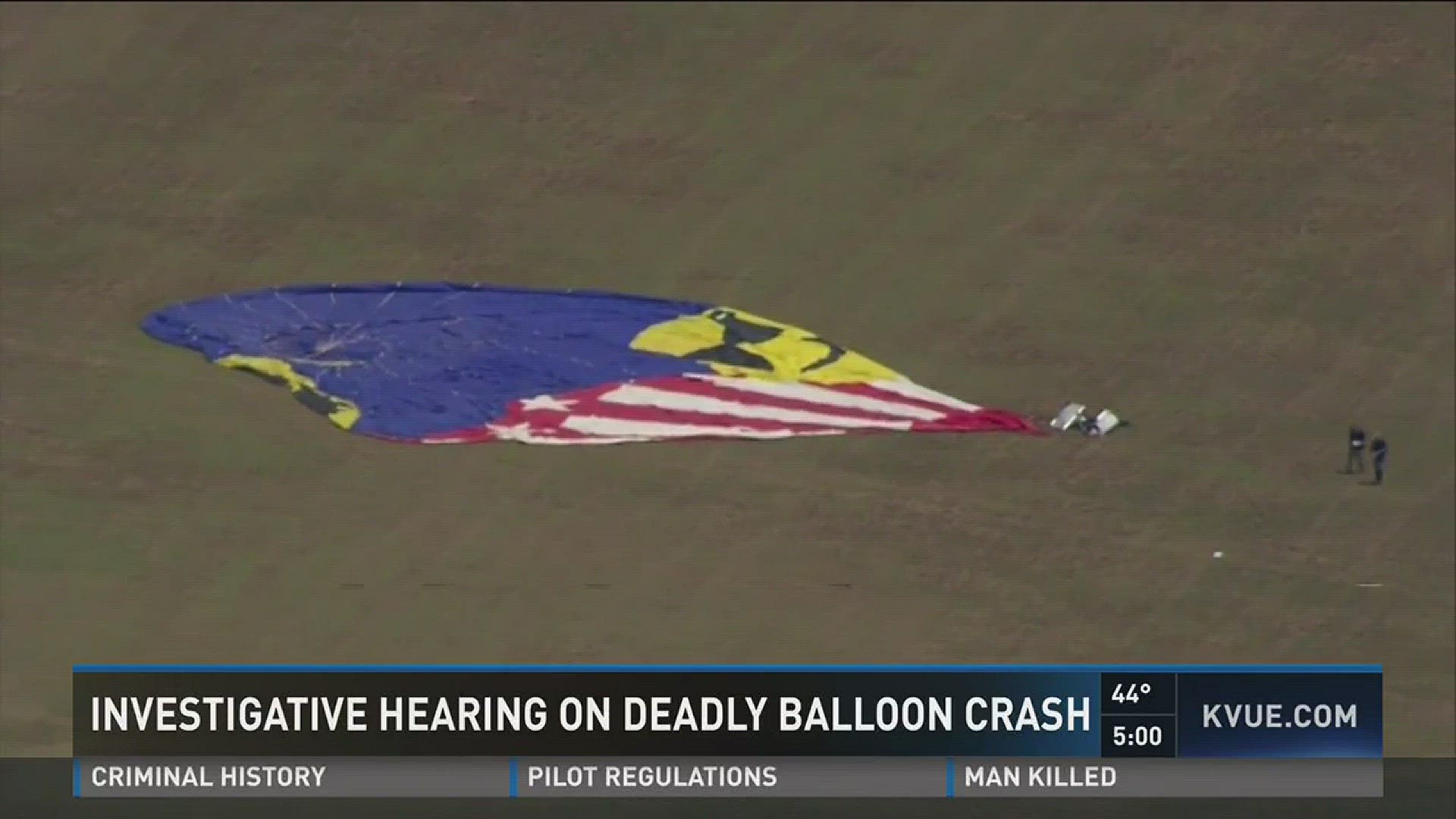The pilot who flew the hot air balloon involved in a deadly crash near Lockhart over the summer knew before taking off that weather conditions were dangerous, according to officials with the National Transportation Safety Board at a hearing Friday.
Officials met in Washington, D.C. for an investigative hearing on the hot air balloon crash that happened in July to examine specific circumstances of the crash and review general hot air balloon safety. They said they will focus on three areas: Balloon operations, regulations and oversight and aeromedical factors.
"This process will assist the NTSB in determining the probable cause of the accident and in issuing recommendations to prevent similar accidents in the future," Robert Sumwalt, a board member with NTSB, said.
On July 30, the balloon struck power lines before catching on fire, killing all 16 passengers. The tragic story was in the national headlines for several days following the crash, which is the deadliest hot air balloon crash in U.S. history. Go here for our full coverage of the incident.
At the hearing, officials said it seemed that pilot Alfred "Skip" Nichols IV, 49, knew that weather conditions were not ideal for flying. The owner and sole pilot of the operation, Nichols obtained a commercial balloon certificate in 1993.
The briefer noted conditions of the 1,200-foot ceiling with no temperature dew point spread and said clouds may be a problem. The pilot responded, 'We find a hole and we go.'
In the next two hours, officials said conditions got worse. The cloud ceiling dropped from 1,200 feet to 700 feet.
"The weather is very critical as we depend on wind speeds and directions to actually execute our flight," an expert at the hearing said.
Officials also found through the investigation that prescription drugs were in Nichols' system at the time of the crash.
“The pilot … had a record of multiple medical and psychiatric conditions as well as multiple prescription medication which were detected in toxicology,” said Bill English, the Hearing Officer. They added that there is no law requiring medical clearance for hot air balloon pilots.
An autopsy report released by Caldwell County stated Nichols had Ritalin, oxycodone, diazepam (Valium), cyclobenzaprine, dextromethorphan (cough syrup) and antihistamines in his blood at the time of the crash.
The balloon involved in the crash is one of the largest in operation in the United States, according to an expert at the hearing. There is no Federal Aviation Administration requirement to operate a balloon of larger size like the one Nichols was operating.
One caveat in operating a larger balloon is that "as the balloon gets larger, there is going to be a slower response time," an expert said.
During the hearing an investigator asked the experts whether pilots feel pressured to not cancel a flight if a passenger has had numerous cancelations either due to weather or other factors.
The experts said they place safety first -- even if that means they have to cancel half of the time due to weather.
When it comes to avoiding power lines -- which is what Nichols ran into prior to the crash -- the experts said they are hard to avoid.
"The power lines tend to blend into the ground itself and can be very difficult or obscure to see," an expert said. "However the towers or poles are that of real good factors to keep an eye on."
Heart of Texas Hot Air Balloon Rides, the company that employed the pilot of the hot air balloon involved in the crash, is not accredited by the Better Business Bureau and has a D+ rating. On their BBB Business Review, Heart of Texas Hot Air Balloon Rides had six complaints with BBB in the last three years.
According to KVUE's news partners at the Austin American-Statesman, Nichols, who lived in Missouri before moving to Texas, was arrested in Missouri in 2000 for a felony driving while intoxicated charge. The Statesman said the case was resolved two years later when he pleaded guilty to a misdemeanor version of the charge.

